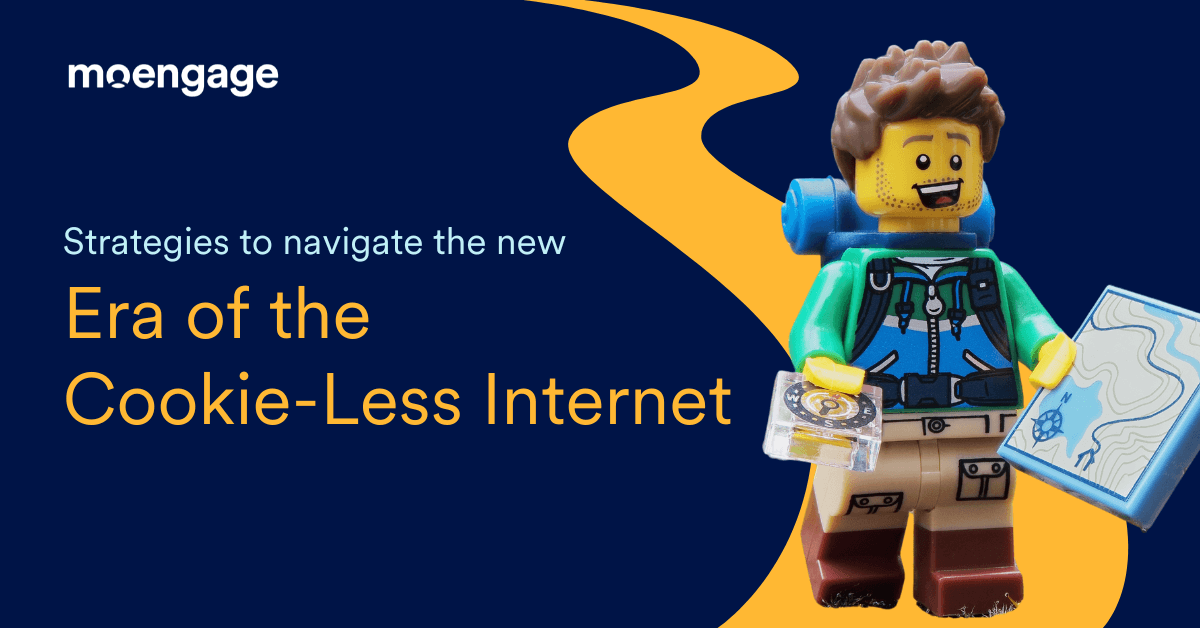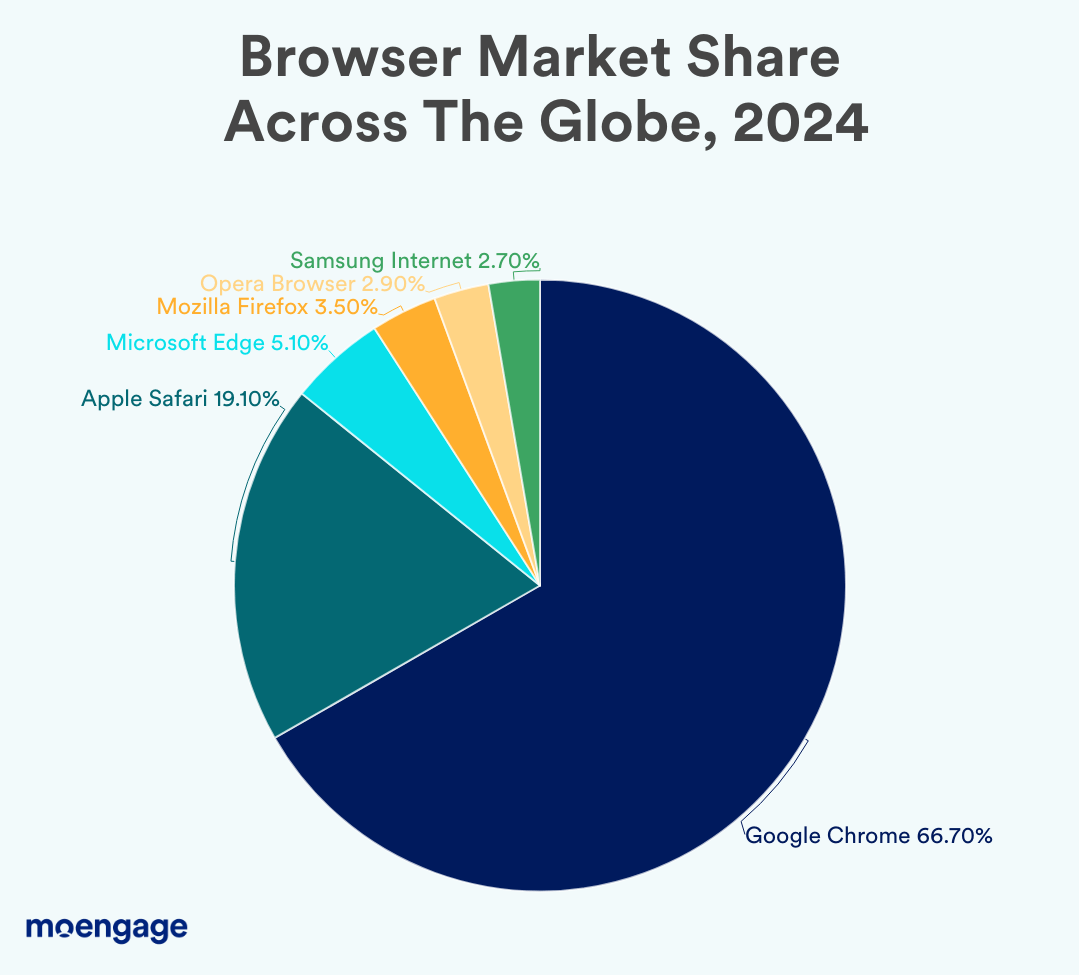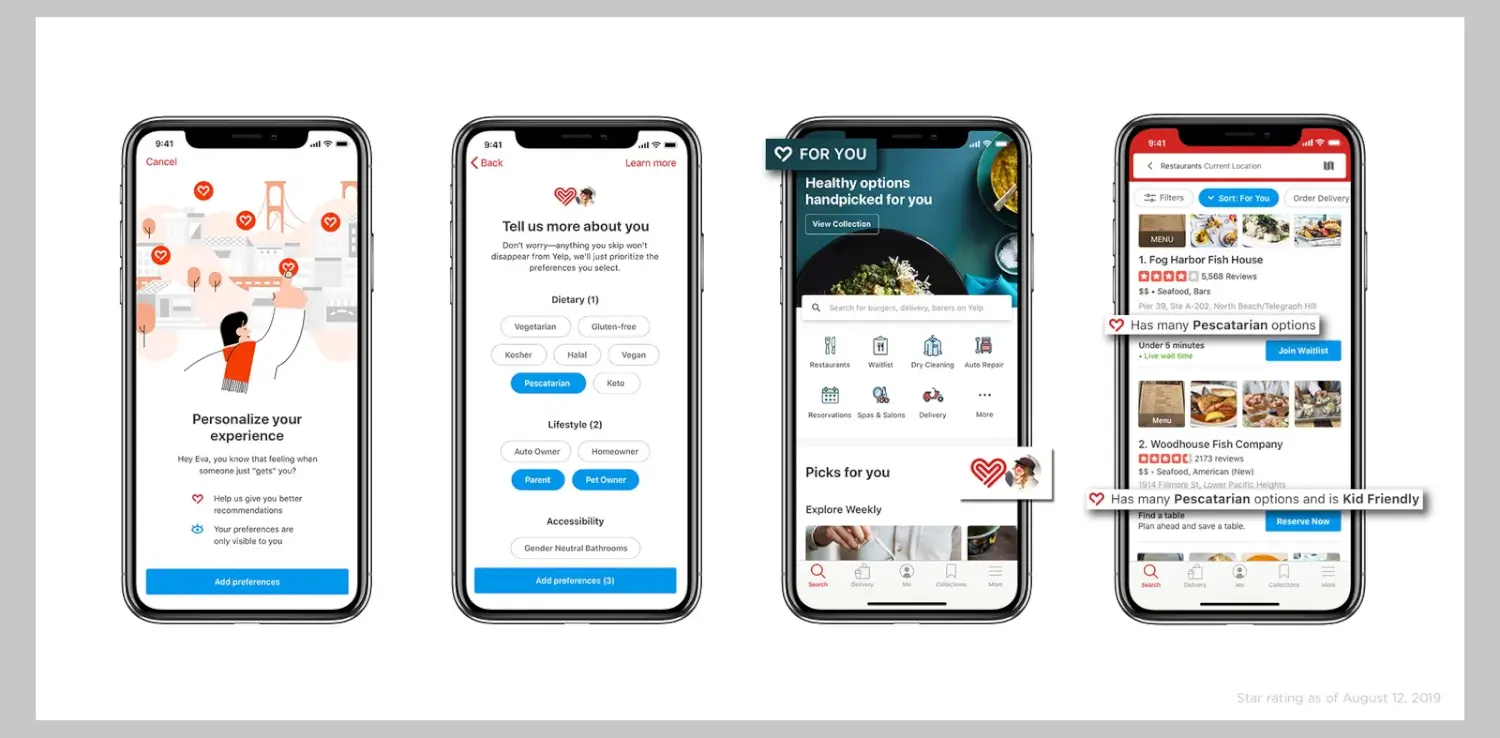Navigating the Era of Cookie-Less Website Engagement: New Strategies in 2024 for B2C Marketers
Google joins Mozilla and Apple to entirely deprecate third-party cookie dependency in 2024. Here's what marketers can do to navigate the new cookie-less era.

Reading Time: 4 minutes
| Note: Brands using MoEngage’s Web SDK will remain unaffected by the deprecation of third-party cookies.
This is because, since its inception, MoEngage’s privacy-first Web SDK has relied on first-party data to help you observe customer behavior, understand their preferences, and serve them relevant recommendations to enhance their website experience. If you’re a MoEngage customer and you want to learn more about MoEngage’s Web SDK, reach out to your favorite account manager. If you’re new to MoEngage, you can contact us here and learn more about MoEngage’s Web SDK. |
Recent changes to third-party cookies have compelled marketers to reassess their website engagement strategies.
Browser Market Share, 2024 (Global)
The 3 big names who already have or have started to deprecate third-party cookies – Google Chrome, Apple Safari, and Mozilla Firefox – have a combined market share of 86.65% in 2024 (source).

B2C marketers, such as yourself, are now facing a paradigm shift that demands new and innovative strategies to engage customers on brand websites.
The Cookie-Less World: Third-Party Cookie Changes Explained
Third-party cookies have served as a reliable way for marketers to analyze customer behavior across multiple websites and serve personalized product or content recommendations as advertisements.
However, privacy and data protection concerns have prompted Mozilla, Apple, and Google to announce plans to block or phase out their support for third-party cookies.

Since the early 2000s, online marketers have observed what websites consumers visit and then show them relevant recommendations for products, travel destinations, bank loans, and so much more – with much of this being possible thanks to third-party cookies.
But, due to their nature, third-party cookies are often, rightfully, viewed as an intrusion to privacy.
The move to phase out third-party cookies significantly impacts your ability to gather valuable customer information and deliver relevant recommendations or personalize your customers’ website experience.
Here are a few challenges you will face due to a lack of third-party cookies:
Challenges for Existing Website Engagement Strategies
- Loss of personalization: Without access to third-party cookies, you lose the ability to deliver personalized advertisements to your customers on other websites.
- Reduced precision: Targeted advertising relies heavily on third-party cookies to observe customer behavior and deliver relevant ads. Without this, you may struggle to reach specific audience segments effectively. This might impact your Return On Ad Spend (ROAS).
- Limited attribution insights: Measuring conversions and attributing them to specific marketing campaigns becomes challenging without third-party cookies, making it harder to measure the effectiveness of website engagement strategies and optimize them.
Alternatives for Third-Party Cookies for Website Engagement in the New Cookie-Less Era
In response to these challenges, you must explore alternative strategies to engage your website customers without compromising their experience:
1. Rely on first-party data analysis
First-party data allows you to personalize experiences thanks to an insights-led engagement approach.
You can use first-party data to understand the browsing and purchasing patterns of your website visitors, gather insights on their preferences, and then serve relevant recommendations to nudge them toward a purchase decision.
Building a unified profile based on first-party data lets you accurately build omnichannel engagement strategies and provide a consistent experience across multiple touchpoints such as Social Media, Email, SMS, Messaging platforms such as WhatsApp, and more.
2. Collect zero-party data without breaking customer experience
Zero-party data is information that your website visitors intentionally share with you via forms, polls or surveys.
To navigate third-party cookie changes, you have to invest in collecting zero-party data with your customers’ consent. Some examples are customer registrations, newsletter sign-ups, or serving interactive content.
Wired covered an excellent example of Yelp collecting zero-party data to serve highly personalized recommendations. You can read more about it here. Here’s a snippet from the article:
In effect, the app will profile your likes and dislikes, to target its recommendations that much more accurately. But rather than infer this information from your online behavior or social connections, Yelp will ask users about their preferences directly. After users receive the update, they’ll have the opportunity to select things like dietary restrictions, such as “Keto” and “Gluten free”; cuisines such as “Thai”; and specific foods, like “Cupcakes.”

| 💡 If you’re a MoEngage customer, you can use MoEngage’s Website Personalization suite and On-site Messaging to convert anonymous visitors to paying customers. |
3. Leverage offline data for personalization
Integrate offline data sources such as retail outlets, stores, banks, and other physical touchpoints with your existing Customer Engagement platform to enrich existing customer profiles and personalize their website experiences.
Let’s say an existing customer, Matt, visits your official Sony website and browses for a Playstation 5. But Matt decides not to make a purchase through the website and walks into the nearest Sony outlet to test the gaming console out and make a purchase. The next time Matt visits your website, a disconnected website engagement strategy will prompt Matt to finish his purchase. However, if you have unified your offline data into a single engagement platform, the strategy would be to recommend Matt an extra gaming console, maybe a protective cover for his PS5 or the latest games available.
Merging offline and online data will ensure a valued customer like Matt does not have a broken experience on your official website and is instead greeted with relevant recommendations.
Thanks to secure data ingestion capabilities, modern engagement platforms like MoEngage help you combine offline and online data.
By combining online and offline data, marketers can gain deeper insights into customer behavior and preferences, allowing for more targeted and personalized engagement strategies tailored to the unique needs of different audience segments.
Conclusion
The transition to a cookie-less environment presents challenges and opportunities for B2C marketers. By adapting your website engagement strategies to prioritize privacy, consent, and relevance, you can continue to drive meaningful interactions with your audience in the absence of third-party cookies.
Embrace zero-party data collection, leverage first-party data, and merge your offline data with online data to navigate this new era of website engagement. If you need help setting up an Engagement strategy in the cookie-less internet, schedule a call with our experts here!














